I hear the rumblings already. “What a load of codswallop, Pease? Of course the pipe matters.” Sure it does, but I can’t count how many times I’ve read similar words to those in the title, and it always makes me a little crazy. Maybe you’re one of those who believes that the briar thing is a load of bogus, that a pipe is nothing more than a vessel in which tobacco is combusted to deliver its smoke to your taste receptors, and once broken in, they’re all about the same. Whichever side of the street you might be on, now that I have your attention, let’s go spelunking a bit, and see what might be found in those dark and spooky caves.
Quite a few years ago, I had a beautiful pipe, made by a well-known artisan. I’ve had quite a few great pipes from this maker over the years. What was surprising, in this case, was that smoking the thing was like sipping sun-baked swamp ooze through a soda straw in July. It was like nothing I’d ever experienced. Recalling it all these years later, words like “putrid,” “rank,” and “vile” shudder into my consciousness. Maybe it wasn’t quite as bad as all that, but time has a way of either attenuating or amplifying things that fall outside of the experiential norm; that’s how fish stories work. Regardless, the thing cruelly transformed even the sweetest smoking of tobaccos into a mouthful of roasted awfulness.
I called the maker to see if he might shed some light. He explained that he’d gotten some briar from a different source than usual, and the few pipes he’d made from it tasted “a little bad,” exhibiting that his talent for understatement was as well developed as his skill in pipe-making. I’d gotten one of those. He said he’d send me a new pipe, and insisted I do what he’d done with the rest of the blocks, and burn the other. No dice. Here was an experiment in the making.
I tried everything I could to redeem the thing. I smoked the hell out of it with every kind of tobacco, suffering through each bowl, hoping to rid it of its awfulness. I soaked the bowl in alcohol, and a few other organic solvents. I steamed it. I baked it in the oven. I put it in a microwave. I sanded the walls back to bare wood and sent it to Larry Roush to apply his treatment and bowl coating. I subjected it to every abuse I could think of. Nothing worked. Finally, after over a year of messing with it, I gave in and gave up, and respecting my friend’s original wishes, set fire to the heinous thing.
The point of this tale is not to puff up my own silly perseverance in the name of pipe science, but to illustrate that the briar from which a pipe is made has more to do with the way it tastes than any other single thing in pipe making. So-called “engineering” certainly has much influence on how well a pipe smolders tobacco, and will therefore affect how a pipe smokes, and to some extent the flavors we perceive as a result, but the wood is number one. A bad pipe can arguably be made from great briar, but a great pipe can never be made from bad wood, no matter how much attention is paid to the details.
Pipe makers throughout history have known this, and many have developed their own techniques of preparing the wood to maximize consistency and improve the smoking qualities of the pipes they make, but it all starts in the ground where the burl grows, and continues with the processing of that burl.
Despite all the care taken during the process, not every block will become a pipe, and not every pipe becomes a prized smoker, but today’s pipe smoker is fortunate. Because demand for briar is dramatically lower than it was at pipe-smoking’s zenith, dedicated suppliers can spend more time plying their craft to deliver top-quality blocks. (In the 1940s, tens of millions of briar pipes were made yearly, placing heavy demand on limited resources; today, that number is about a thousandth of that.) Too, modern pipe makers have learned from those before them, and know what goes into making a good pipe, producing pipes of consistently higher quality than ever before. We might well be in a sort of “golden age” for pipe-smokers. A brief discussion of two pairs of pipes might further illustrate.
First up, a lovely pair of Heeschens. Early in our friendship, I asked Peter if he would be willing to make me two identical pipes from the same block. He agreed. They are as close to monozygotic twins as two pipes can be, having the same dimensions, the same internals, both being made by the same man, on the same day, from the same block. For the twenty years I’ve had them, I have smoked them together, the same blends in each, often going as far weighing out the tobacco to ensure each was filled the same way. These two pipes taste as similar as two pipes can, but despite being born and raised together, being treated with the same care throughout their lives, they remain distinctly different from one another. One is slightly sweeter, the other a bit spicier.
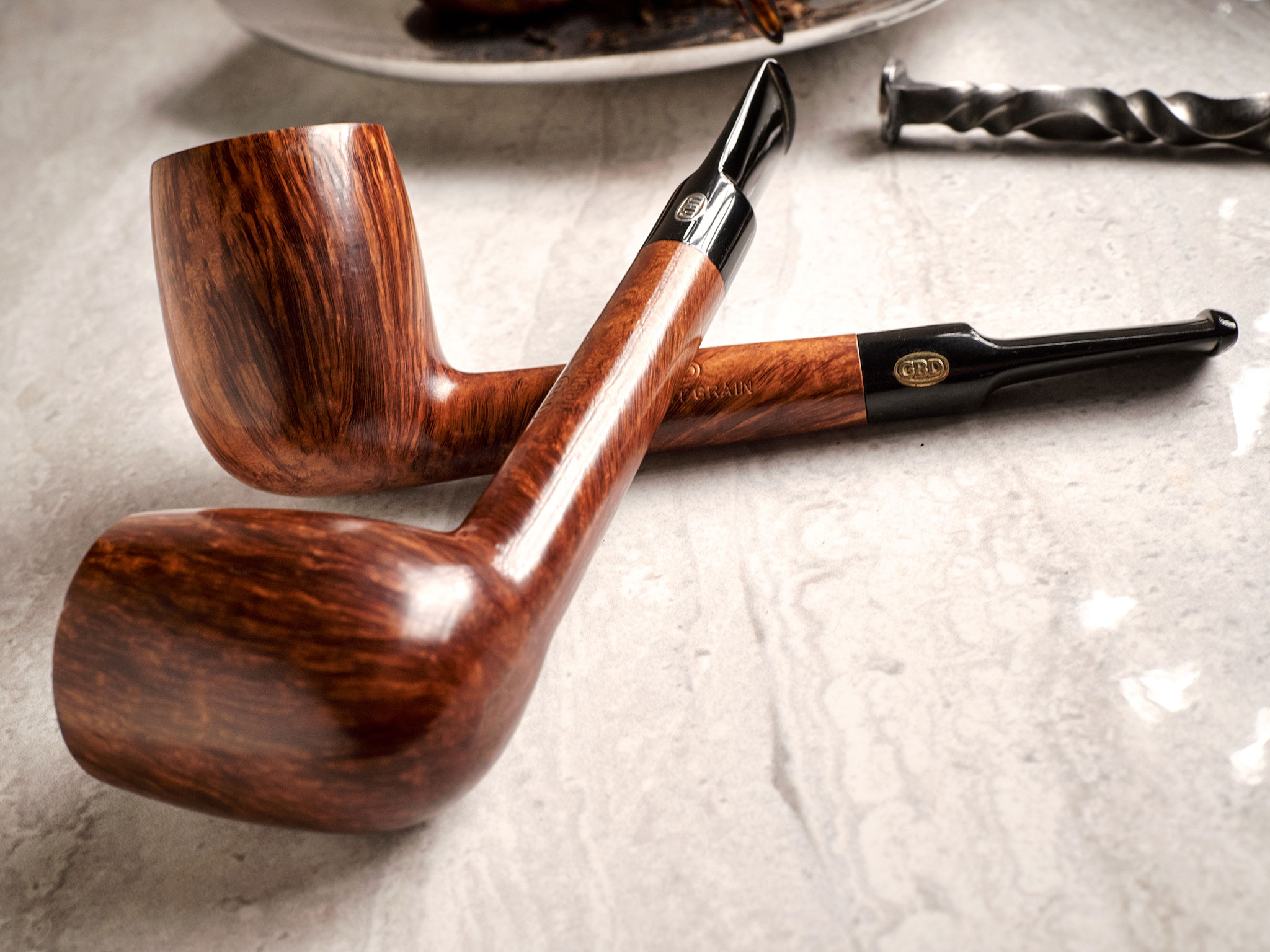
At the other extreme, enter the pair of GBD lovats shown, one a Virgin, the other a Straight Grain. I’ve owned many old GBDs, and have found their smoking characteristics to be all over the map. But, as these two are outwardly so similar, they present an interesting illustration. Both are London-made, from two different decades. Both have nice, straight-ish grain. They have the same dimensions, both externally and internally, weigh within a few grams of one another, and each has been “blueprinted” to present similar flow characteristics.
I’ve smoked both of these pipes hundreds of times, yet they remain nearly as different as two pipes can be. One gets on very well with latakia mixtures, but punishes my palate if filled with straight virginias, or virginia/perique blend. The other behaves almost exactly the opposite, expressing itself wonderfully with virginias, but if filled with something dominated by orientals, it’s like smoking the briar equivalent of a plasma cutter. I’ve tried over and over, to coerce these two to be more alike. They’re not playing. Each one is something of a specialist, singing arias with the right tobaccos, squawking like mad cats with the wrong ones.
Today, there are so many great pipes to be had at all points along the price spectrum, from very affordable to astronomically expensive, but they won’t all be alike, and we shouldn’t expect them to be. To imply that the pipe is not an important variable in the equation of a great smoke is both wrong-minded and a bit unfair, especially to those new to the pipe who seek guidance from our collective experience. Sometimes, it might take a little exploration to find the combination of pipe, tobacco and technique that makes sweet music. That exploration is part of the fun, and is time well spent. Of course, sometimes, fortunately rarely, a particular pipe might just be a bad actor, its only redemption to be found in the fires of its destruction. Either way, yes, the pipe matters.
The Author’s Heeschen Pipe Twins – photos by G.L. Pease
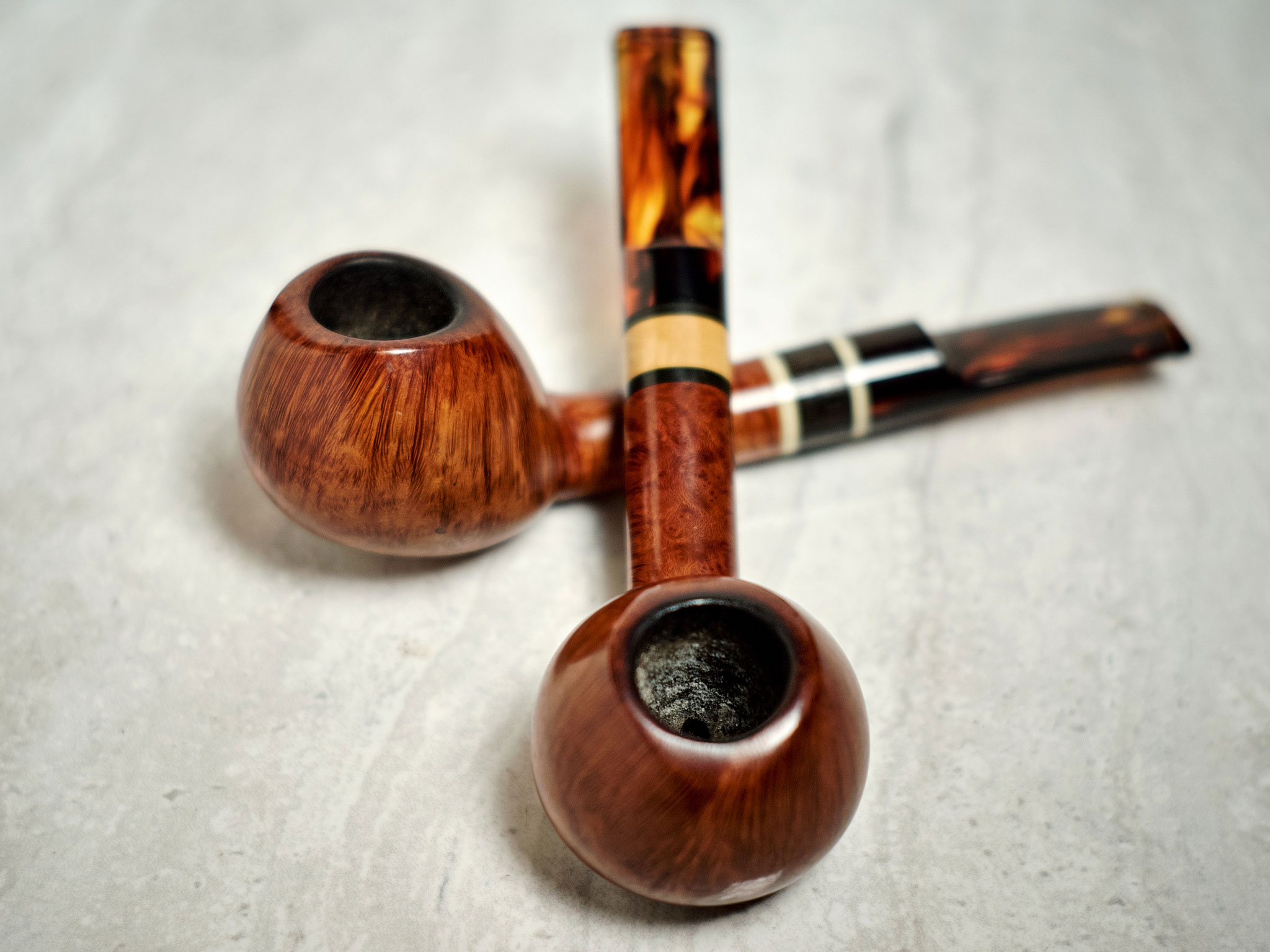
Gregory L. Pease's Pipe Smoking lifestyle meanderings for September 2021


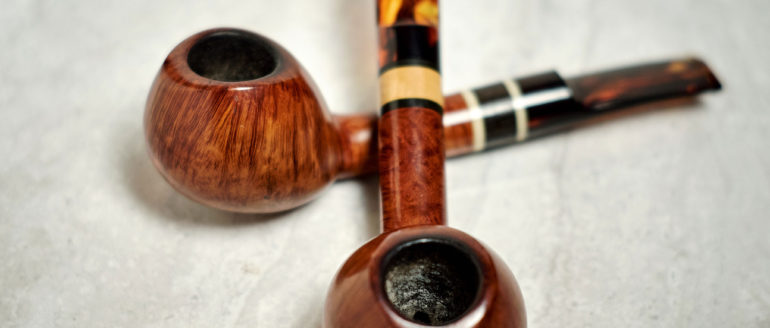



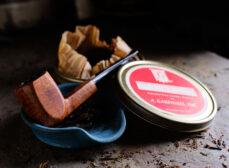
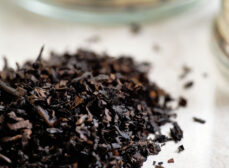















That’s an authoritative consideration of the variable smoking qualities of pipes. I have several up-market pipes that I enjoy greatly, but most of my pipes are bought on a budget. I’ve ended up with a number of MM cobs and U.S. and other factory pipes, but mostly bought with considerable attention and research. I am always pleased to discover what a fine smoke can be had from a $24 or $40 pipe. I do miss some of the personal connection I get with an artisan pipe, but I do feel respect for the artisans who happen to work on pipe factory lines.
You – or anyone- cannot take a poor piece of wood, be it briar for pipes or wood for cabinetry and make it into an excellent wood. Yes, you can make it look excellent….
I have a theory which I’ve tested a bit, but not in the scientific method, that a pipe that smokes wet can be bettered by smoking many half bowls of dry tobacco to the heel. Theory being that said pipe wasn’t properly cured or dried, and the heat, particularly at the bottom of the chamber will drive out moisture. Of course, that can’t cure briar that’s poor to begin with!
This article is a bit silly when we have a glut of properly cured briar and 99% of pipes, even artisan pipes, are drilled with almost no attention paid to airflow through the stem.
It’s like pointing out that quality tires are necessary for a good sports car to perform, but then everyone acts like putting sticky rubber on a minivan makes it a sports car.
According to this article the quality of Briar is a gamble no matter what price you pay, but extra attention to drilling is the only thing guaranteed to separate ordinary pipes from extraordinary pipes.
Or you could just get a Missouri Meerschaum Corncob with the perfectly designed injection molded 80 cent plastic stems and know you will have the best possible smoke 100% of the time.
Very interesting! Genuine food for thought.
Last part of the variable – switch the pipe stems and give them a try. Why not.
Interesting article. Thanks for taking the time to write it. I will give more thought to it as I only buy and smoke American made artisan pipes. So far I have never had a pipe that tasted foul like described in the article. The only pipes I ever had that were foul like described was from pipes that were ghosted to hell. Lakeland and Latakia ghosts make me want to puke which is why I am not buying estate pipes anymore. If a pipe has maybe a bowl smoked through it then I might think about buying it.
My last 12 pipes I have bought were all Jack Howell commissioned pipes and the briar was great. Every pipe tasted really nice and they all smoked fantastic. When Jack would run into a pipe he didn’t like or if he thought it would be a poor smoker he would tell me the pipe went into the trash. Jack would rather chuck the wood than try to save it and try to sell it He knew when he got a bad pipe, he has some real talent knowing what is good wood or what is not good wood. I have another pipe in the works from Jack and will be ordering more commissions from Jack. I am totally spoiled for brand new pipes from Jack. My next one is another Rhodesian. I already have one Rhodesian as part of my 7 day set from Jack. I really like how Jack makes a Rhodesian. His shaping is as classic as it gets. I am a junkie for the classics which is why I have been ordering pipe after pipe from Jack. I have sold off a lot of pipes so I can make room for more of Jack’s pipes. I have one cabinet that is empty and holds 15 pipes. I also have some space in my big rack that holds 36 pipes. This rack has all my Rad Davis pipes and then some other pipes made from guys like Bruce Weaver, Brian Ruthenberg, Michael Butera, Brandon Brooks and a few others I can’t remember off the top of my head.
This is really interesting and something I hadn’t considered before! Curious if OP has any tips on how to really hone in on differences – are they subtle and take experience or fairly pronounced and obvious side-by-side? I’ve never had the experience of smoking two identical pipes, certainly not of any significant value at least.
This article gave me a simple thought. If pipe smoking goes back to the place it used to be, then even our most basic pipes will become worth more and become sought after. Since the quality of the briar they where made with was during a time of low competition for quality briar.
I’m kind of an omnivorous pipe smoker; besides briar, I smoke meerschaum, cherry wood, corncob, olive wood and clay pipes. The trick for me is to match up which pipe goes best with the 3 or 4 basic types of tobacco blends I prefer, but even if I were to confine myself to briar exclusively, there’s still the question of briar sourcing (Italy, Greece, Algeria, etc.) and curing methods. A lovely can of worms.